Idea by
Kornelia Dimitrova
Call for ideas 2021
Playbook for healing environments
Playbook for healing environments

- New alliances
The difference between a burnout and soil degradation is the time and scale of exhaustion. In both pre-existing geographic, economic or racial inequalities only drive the exhaustion further. In the anthropocene, mental and environmental health seem to have more in common. Their remedy is in the process, not the final state. A process is about transformation over time. The architecture of real inclusion means aligning with the time frames of those being included - nature, individual, community.
Situated at the headquarters of a large mental health facility in the Netherlands, this project imagines a way of spatial development that aligns with the healing and ecological processes. With the community I developed an architectural playbook showcasing possibilities from small interventions and events to strong integrated structures. The proposal visualises how the overarching transformational logic unfolds in a few weeks, months, years and decades.
Embracing that healing is a process.
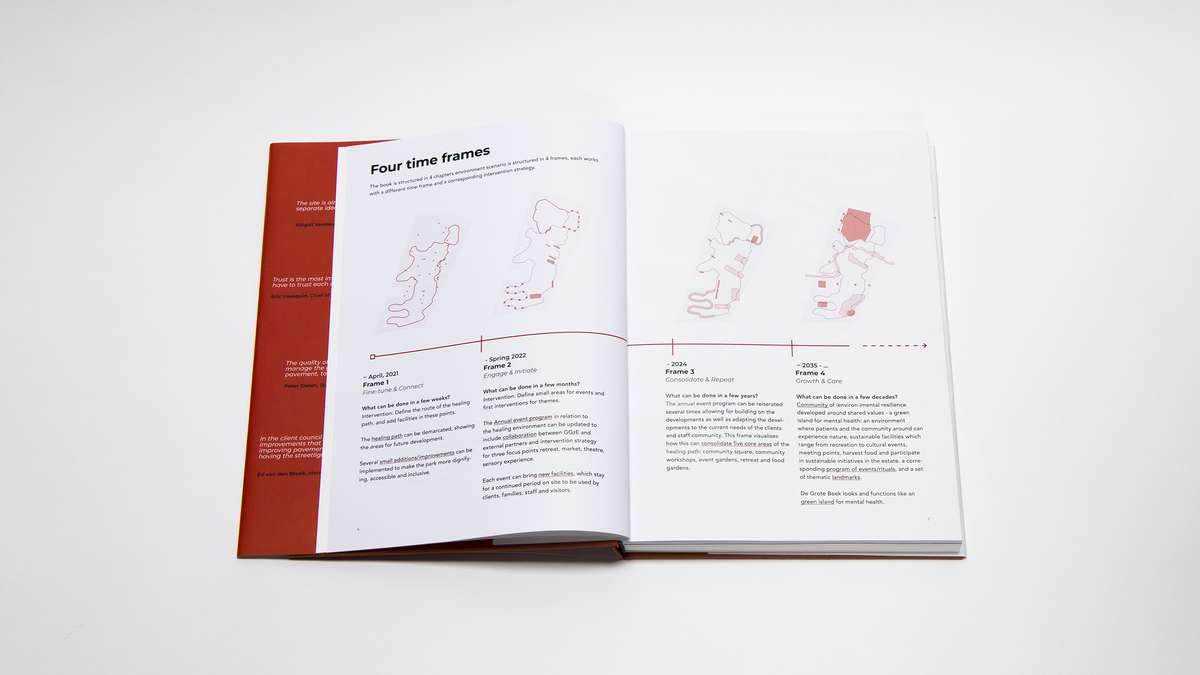
The playbook is structured in 4 time frames, each of them shows how the site can be transformed as a sustainable healing environment by focusing on interventions that take different periods to create - a few weeks, months, years and decades. Ranging from small topical interventions to large scale structural transformation. The aim was not to show all possible and practical solutions, but rather to explore what thinking at different timeframes can offer as a principle of spatial development.
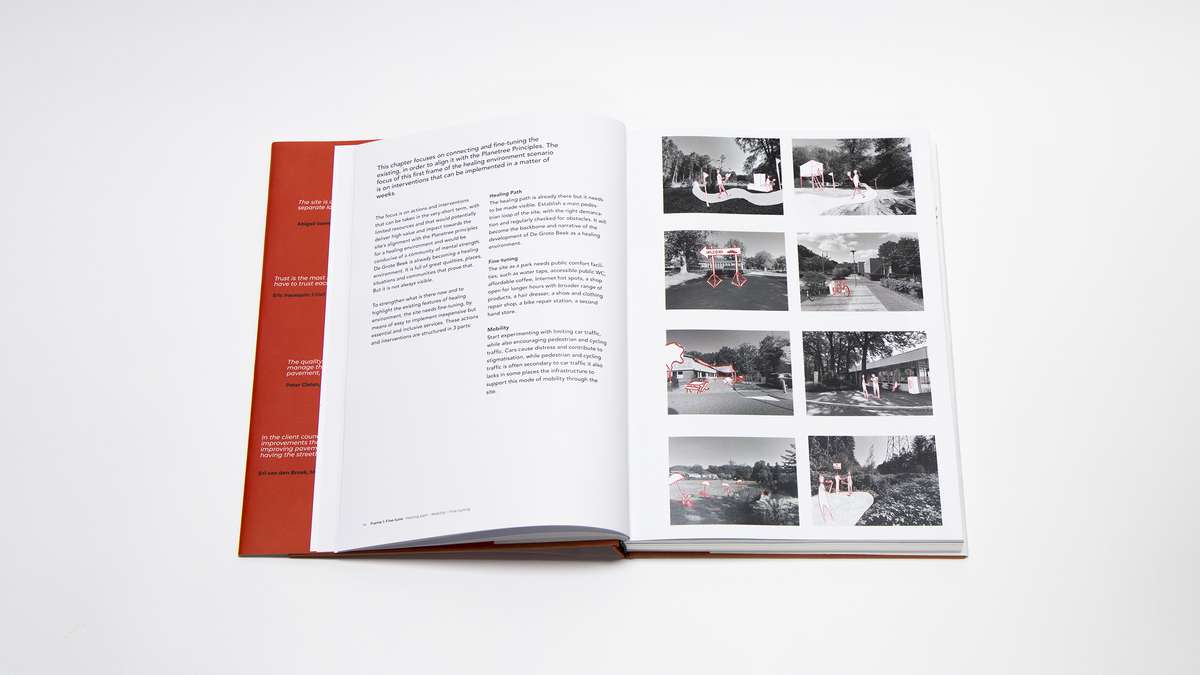
Frame 1 focuses on demarcating the main loop of the park in development. Secondly, it proposes small, topical (off-the-shelf ) interventions that can be implemented within a few weeks, and that dignify the experience of the residents of the facility and the recreational visitors. This includes water taps and bike pumps.
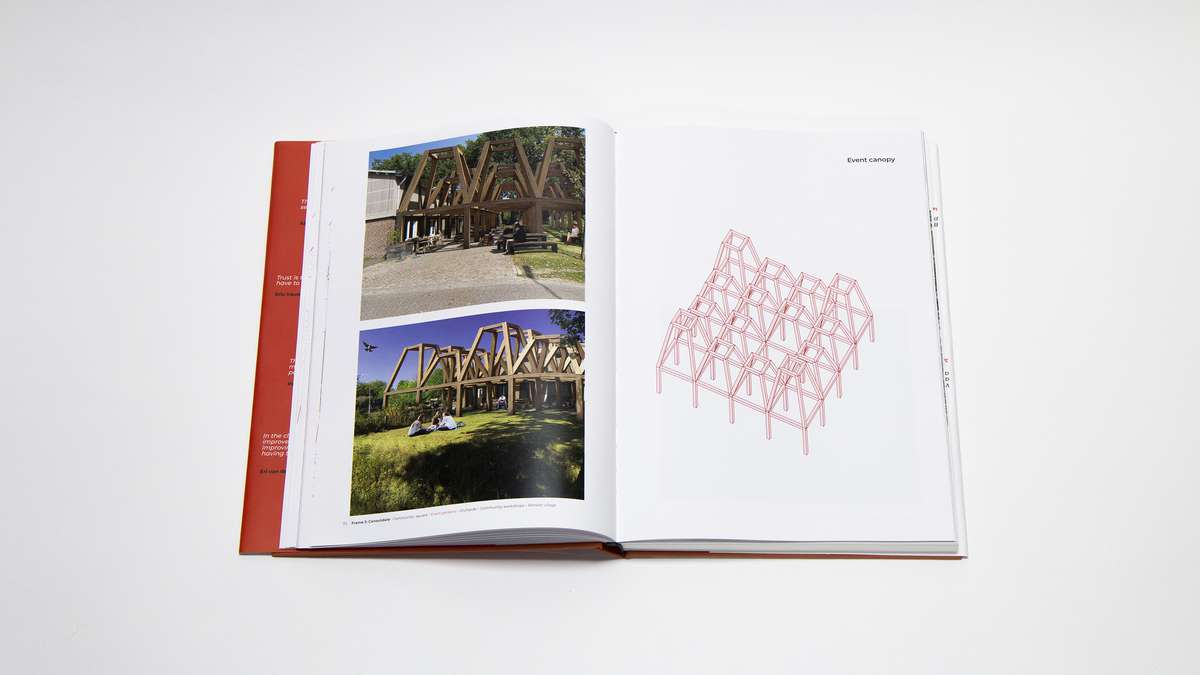
Frame 2 looks at the possibilities for the site with spatial interventions that span just a few months. In this case the plan is structured around an annual program with events focusing on different aspects of healing. Through this the site can test a variety of facilities and functions without building permanent facilities. Such smaller temporary facilities also create space for the vulnerable community to be included in the decision-making process.
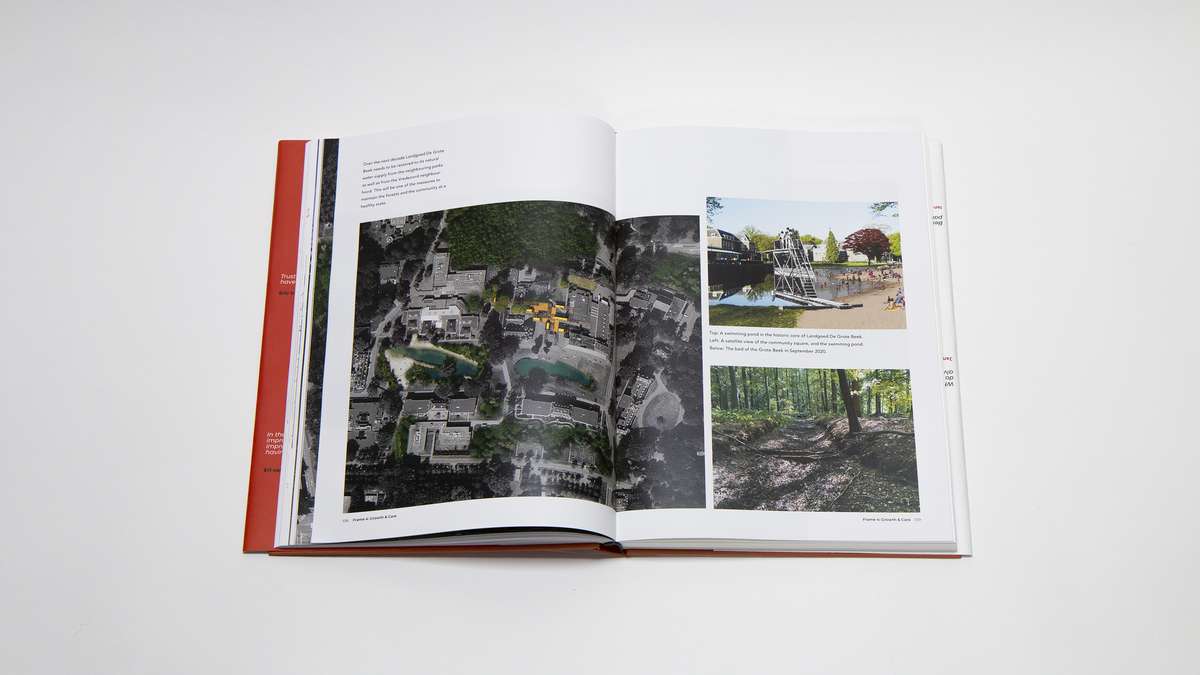
When extrapolated in the long-term the events might generate an architecture that can continuously accommodate the needs of the community. In some cases this might grow into a network of smaller buildings with patios for instance. Flexibility and adaptability is one of the key sustainability aspects for mental health institutions in times when social attitudes are changing.
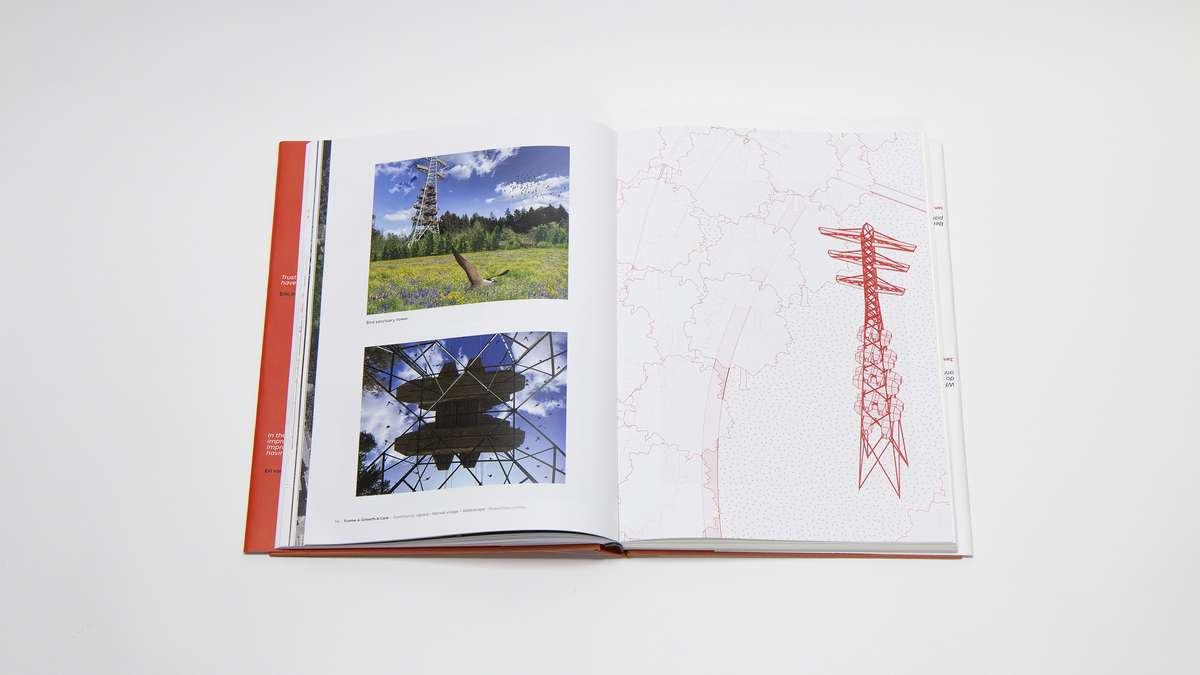
When thinking of transformation over decades, then very few things remain permanent. The overhead power lines for instance, which today might seems scary for some, could be reinvented as bird sanctuaries.
Playbook for healing environments
Playbook for healing environments

- New alliances
The difference between a burnout and soil degradation is the time and scale of exhaustion. In both pre-existing geographic, economic or racial inequalities only drive the exhaustion further. In the anthropocene, mental and environmental health seem to have more in common. Their remedy is in the process, not the final state. A process is about transformation over time. The architecture of real inclusion means aligning with the time frames of those being included - nature, individual, community.
Situated at the headquarters of a large mental health facility in the Netherlands, this project imagines a way of spatial development that aligns with the healing and ecological processes. With the community I developed an architectural playbook showcasing possibilities from small interventions and events to strong integrated structures. The proposal visualises how the overarching transformational logic unfolds in a few weeks, months, years and decades.
Embracing that healing is a process.
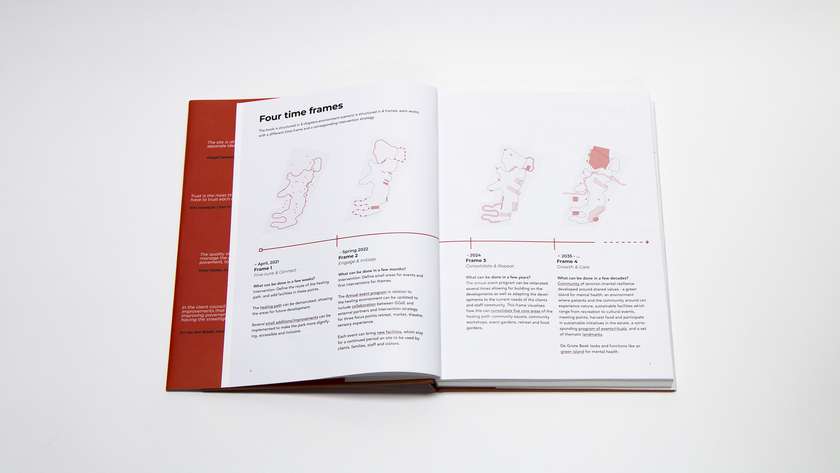
The playbook is structured in 4 time frames, each of them shows how the site can be transformed as a sustainable healing environment by focusing on interventions that take different periods to create - a few weeks, months, years and decades. Ranging from small topical interventions to large scale structural transformation. The aim was not to show all possible and practical solutions, but rather to explore what thinking at different timeframes can offer as a principle of spatial development.

Frame 1 focuses on demarcating the main loop of the park in development. Secondly, it proposes small, topical (off-the-shelf ) interventions that can be implemented within a few weeks, and that dignify the experience of the residents of the facility and the recreational visitors. This includes water taps and bike pumps.
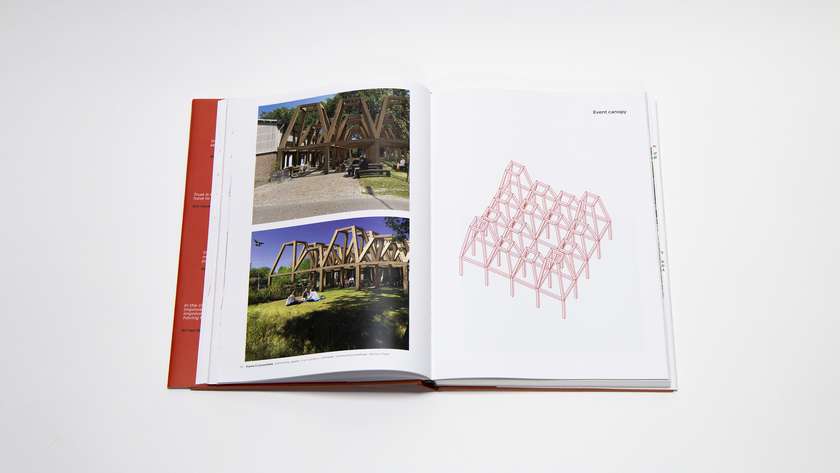
Frame 2 looks at the possibilities for the site with spatial interventions that span just a few months. In this case the plan is structured around an annual program with events focusing on different aspects of healing. Through this the site can test a variety of facilities and functions without building permanent facilities. Such smaller temporary facilities also create space for the vulnerable community to be included in the decision-making process.

When extrapolated in the long-term the events might generate an architecture that can continuously accommodate the needs of the community. In some cases this might grow into a network of smaller buildings with patios for instance. Flexibility and adaptability is one of the key sustainability aspects for mental health institutions in times when social attitudes are changing.
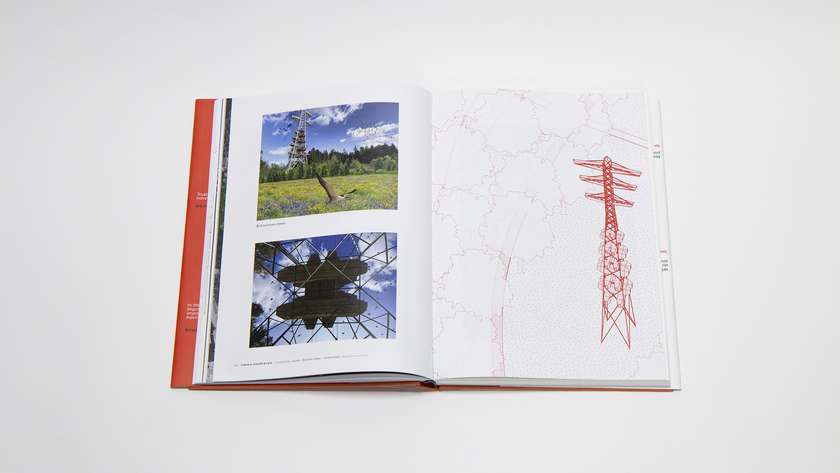
When thinking of transformation over decades, then very few things remain permanent. The overhead power lines for instance, which today might seems scary for some, could be reinvented as bird sanctuaries.